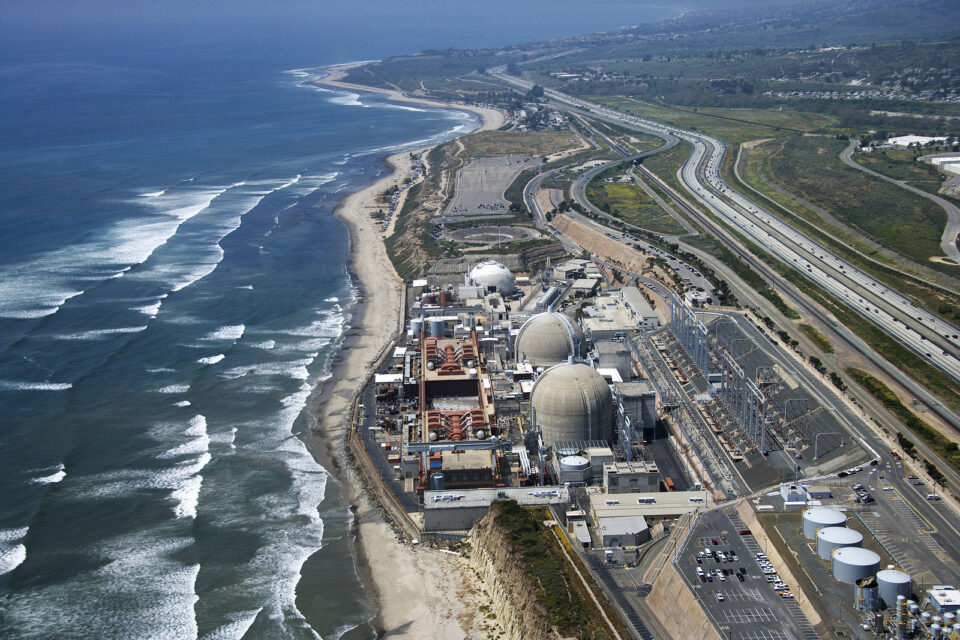REGION — The California Coastal Commission approved a program that will monitor and take care of dry storage containing spent nuclear fuel at the San Onofre Nuclear Generating Station.
The CCC met July 16 to vote unanimously on the inspection and maintenance program (IMP) proposed by plant owner Southern California Edison for spent nuclear fuel storage at SONGS.
Edison developed the program in response to a special condition in its 2015 Independent Spent Fuel Storage Installation (ISFSI) development permit issued by the CCC.
The IMP applies to only to Edison’s Holtec UMAX system. The Holtec International Storage Module Underground MAXimum Capacity (UMAX) is an underground Vertical Ventilated Module dry spent fuel storage system, engineered to be fully compatible with all presently certified multi-purpose canisters
The state commission hired LPI, an independent engineering firm, to review the program prior to their vote. The firm found the program was sufficient to detect wear and observe the storage system until 2035. Edison’s Holtec system is licensed until that same year.
According to the CCC’s staff report, the IMP will ensure that the canisters containing spent nuclear fuel in dry storage at SONGS remain sufficiently intact to allow for both on-site and off-site transport until Oct. 6, 2035.
LPI made four recommendations to enhance the IMP. John Dobken, spokesperson for Edison, said all of the recommendations were incorporated into the IMP. Those recommendations include:
- Flaw depth of 0.0625 inches as the threshold for fuel canister repairs. Any flaws deeper than that would need to be repaired.
- A “more appropriate” statistical method for modeling the maximum depth of canister scratches that may occur during insertion and extraction.
- Assessment of how future canister unloading operations can be optimized to minimize wear.
- Correction of a typographical or miscalculation error in a support document related to the potential scratch or wear mark depths on canisters.
The Holtec UMAX system was licensed for operation in 2015. After its initial 20-year operation period, the Nuclear Regulatory Commission requires licensees to conduct canister inspections as part of an Aging Management Program (AMP).
“The Holtec system will also be under an AMP starting in 2035,” Dobken said.
The NUHOMS system, Edison’s other spent fuel dry storage system at SONGS, is licensed until 2023. Dobken said the NUHOMS system will be under an AMP. The NUHOMS Dry Shielded Canister is a canister that is licensed for safe storage and transport of used fuel. The NUHOMS canister has a strong containment shell that is made up of up to 5/8-inch thick, highly corrosion-resistant stainless steel.
The IMP will officially begin in 2024. According to Edison, two canisters will be inspected every five years.
The program will also inspect the San Onofre test canister every 2 ½ years. The test canister, a “first for the industry” according to Edison, is an electrically heated, full-scale canister simulator without any spent fuel inside that is used to model potential effects of storage over time.
The CCC will receive inspection results from this program.
Though Edison maintains that it is unlikely a canister would require repair, the utility company selected a metallic overlay repair process for such work. The process would combine the robotic visual assessment used to inspect canisters, with metallic overlay technology, a high-energy, solid-state coating and powder application.
Edison submitted its IMP proposal in March for review. The IMP was originally due in 2022, but that date was expedited after the CCC approved a development permit in October 2019 for decommissioning and demolition of the SONGS site.
The transfer of spent nuclear fuel from wet to dry storage at SONGS is expected to be complete by August.




